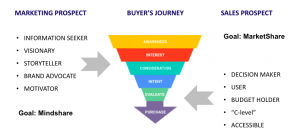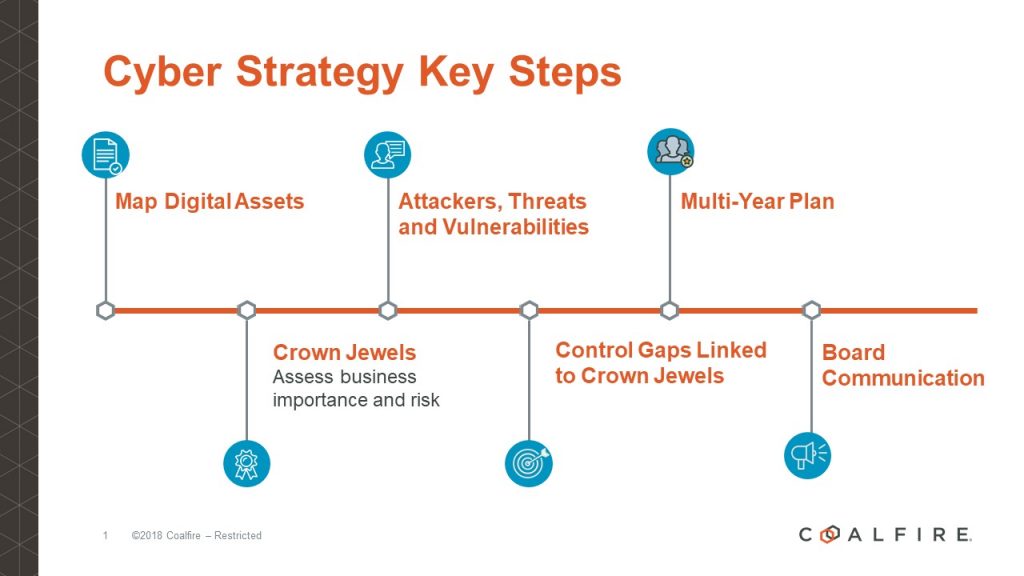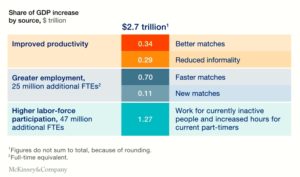
by scott.gillum | Dec 1, 2020 | 2020, Business Trends
Face to face meetings are dead, at least for the foreseeable future. Companies have invested in sales enablement platforms without seeing a measurable improvement in productivity. Email response rates are at a record low, and webinar performance is declining. Scott interviews Dr. Howard Dover, Director of Professional Sales and Sales Coach, University of Texas at Dallas on these challenges and how they are impacting how we sell now and in the future .
To hear Scott’s entire conversation with Dr. Howard Dover, Director, Center of Professional Sales, and professional sales coach to discuss the Future Of Selling”, listen or download here:

by scott.gillum | Oct 13, 2020 | 2020, Business Trends
Estimated read time: 5 Minutes
This post ran original on The Drum on September 30th it can be viewed by clicking here
Thank you Covid, we just broke the record for poor performance. According to Hubspot, the response rate to emails fell to a record low of 2.1% in April. Said differently, 98% of our efforts to reach new prospects failed.
With conversion down what did we do? You guessed it, we increased the number of emails sent during the same period by 50%, according to Hubspot’s survey of 70,000 customers. We are playing a zero sum game, and it’s literally a race to the bottom.
Why is this acceptable? Yes, the pandemic has had a dramatic impact, but even in good times, a 4% click through rate is the benchmark. Why haven’t we been able to improve?
Because the only real lever we really had was to increase volume as conversion rates declined. Now with the advent of new tools, we’re uncovering issues and learning new insights into how to improve performance. Here are 3 things we have discovered so far.
Issue #1 – The Wrong Objectives
Marketing has, because of the pressure from the rest of the organization (from mostly sales and the product organization) lost sight of its objectives. Marketing’s goal is to increase the awareness and interest in a company’s brand, product and/or services and get that prospect to take action. It’s to start the cycle, get a conversation going and drive interest.
A good marketing prospect is an information seeker. Employees who are on the constant lookout for information that benefits them personally, in their role, or for the greater good of the company. A great marketing prospect is someone who will bring our information into the organization, get the buying process started and advocate for your brand.

The point, what we are defining is a personality type, not a title. In the past that has been very difficult to identify. As a result, we have had to rely on mining the existing customer database or using a persona that was defined by the product or sale organization which has left us with senior level buyers.
The problem with that is many of these targets, who are decision makers or budget holders, are not present at the beginning of the buyer’s journey. And as we now know, they are also not interested in what we’re offering.
Issue #2 – The Wrong Targets
With the advent of personality profiling tools like Crystal Knows, IBM Watson, or xiQ, it is now possible to determine which personality types are most likely to meet the needs of marketing.
AI enabled profiling tools identify 4 personality types as defined by DISC (Dominant, Influencing, Steady and Conscientious). Of the four personalities, only 2 types of audiences are good for marketing purposes because of their behaviors and motivations.
Based on our recent client work across the healthcare, tech and professional services industries, we also know that at least 30% of a company’s customers will profile into one of the two categories that are either not active information seekers or are not active in the buying group.
They will not convert, but given our current practices, they still end up on the target list driving down response and conversion rates.
Issue #3 – The Wrong Type of Content or Marketing Assets or Both
The two key audience segments that are present at the beginning of the buying process and actively seek information have different motivations for why, and how they intend to use information.
When targeting titles, companies create one type of content based on that buyer’s role. With personality profiling we know that audiences have different preferences for content and how it’s packaged.
The first personality type prefers “big picture” highly visual content told in story form. These “motivators” are drawn to infographics, animated and testimonial videos, which allow them to grasp concepts very quickly.
Their personality type is “altruistic” and they use information to share with others for the good of the organization. Their motivations are deeply personal in that they like to be seen or perceived as a “thought leader” that others seek out for insight.
Contrast that with the other active information seeker. The “demonstrator” profile seeks information relevant to them in their role. They want “proven” information, use cases, case studies, and business case material (ROI’s). Content that is rich in information on how to implement and business impact.
Combined, these two groups will make up 70% of your responders to marketing activities depending on what it is, and you need to know how that mixes to build and align content. And here’s a hint, you only need two types of personas for marketing…the two I just described.
We are dealing with a future that is more uncertain than anything we have experienced in the past. Add to that an election, polarization and social justice movements we have one of the most emotionally charged atmospheres in modern history. ABM and personas do not delve deep enough into defining buyers interest, motivations and preferences.
To improve marketing performance you have to ramp up personality based marketing and that will require work. Not everyone will be willing to put in the effort, but the ones that are will break the chain of putting more in and getting less out.

by scott.gillum | Sep 15, 2020 | 2020, Business Trends
Pixel506 is a tech company based out of New York and Costa Rica. Antonio Ramirez, CEO of Pixel506, sat down with Scott to discuss remote work and working in Costa Rica during COVID19. Antonio Ramirez gives tips on creating award-winning websites and how to set up your digital efforts for success.
To hear Scott’s entire conversation with Antonio Ramirez, CEO and Founder of Pixel506 about “Remote Work And Working In Costa Rica”, listen or download here:

by scott.gillum | Jul 15, 2020 | 2020, Business Trends
Covid, remote teams, layoffs, diversity and inclusion, trade wars, and now security risk? There is so much on the plate of CMO’s already, and now they need to focus on cyber risk. Yes, according to Patrick Kehoe, Chief Marketing Officer at Coalfire, a cyber risk assessment firm.
“The FBI says cybercrime reports quadrupled during COVID-19 pandemic; other reports and our experience reflects the same. In short, security isn’t an IT problem, it’s a business problem—and it’s one that marketing needs to pay attention to, given the amount of technology it now controls.”
What specifically should the heads of marketing be concerned with? Well, start with remote teams accessing customer databases, content management systems and those “off the IT radar” landing pages, microsites and websites. According to Kehoe, “it’s time to come clean with the IT department. If you haven’t already been breached, it is likely just a matter of when, not if, so you have to stay proactive.”

A recent RSA CMO study showed that 20% of security incidents can be linked back to marketing activities. What can you do to be prepared? “The number one thing marketers can do is get a seat at the table. Use the IT organization to assess vendors and make it clear to them that security is paramount. Ensure an incident response plan is in place and be a part of the cyber security strategy,” according to Kehoe.
A good cyber security policy can also have an upside. Use it in your marketing material. Ensuring customers, especially at this time, that you have a solid understanding of the risk, and have plans in place to address them is essential. Don’t be shy about listing your certifications and/or seals on your website.
Security and risk assessments are now table stakes, according to Kehoe. “If you want to make it into the consideration set, you have to demonstrate that you have a clear and proactive approach to addressing security issues. But don’t overstate it, if your cyber security solution only blocks 99% of attacks, don’t say it blocks all attacks.”
Finally, being honest about your success rate and the capabilities of your solution is the best way to build long-term relationships and drive more positive customer referrals over time. But first, you have to have that honest but difficult conversation with the IT department about those things they may not know about. Good luck, and stay safe!
To hear Scott’s entire conversation with Patrick Kehoe, Chief Marketing and Strategy Officer at Coalfire Systems Inc. about “What CMO’s Need To Know About Cyber Security”, listen or download here:

by scott.gillum | Feb 8, 2018 | 2018, Business Trends
In the 90’s casual Fridays brought about the slow death of formal business attire in the office place. In the new millennium, mobile devices effectively eliminated the “9 to 5” workday and erased the line between personal and professional. Now, the “Gig Economy” is about to kill the concept of a company employee.
The freelance workforce is growing three times faster than the U.S workforce. At this rate, according to a recent survey by Upwork and the Freelancers Union, independent workers will be the majority by 2027. Yes, more people will work for themselves than for corporations, and they will be doing it because the want to…not because they have to.
The work is not what you would think of as typical “gig economy” jobs, e.g. an Uber driver. According to the FIA survey of close to 6,000 adults, this group is preparing for the future more swiftly than traditional employees. Nearly half of the freelancers surveyed told researchers that their work is being impacted by AI and robotics (only 18% of the traditional workforce). As a result, 65% are staying on top of the latest trends and are putting time aside to learn new skills, compared to 45% of traditional corporate employees.
As a result, this specialized workforce is finding independence because it is developing high demand, hard to find skill sets, creating an opportunity for them to offer their time to the highest bidder. Rather than work on projects dictated by an organization for a set salary, they can choose to work on various projects based on their interest for multiple companies. Selecting projects that advance or refine their skill sets. Deepening their experience that increases market value. This practice, commonly seen among IT workers, is now making its way into other areas like marketing and HR because of the increased use of digital tools and platforms.
It’s not only employees who are driving this trend. Employers see this as an opportunity to optimize their staff cost. The “Open Talent Economy” described by Deloitte is expected to grow significantly in the next 3-5 years. According to their research “off-balance” sheet employees will grow 66 percent over that time period. While only 6% of the C-Suite rated this trend a priority in 2017, 26% believe it will be important in the next 3-5 year, an increase of 400 percent, one of the largest increases seen in their annual Global Human Capital Trends report.
Sitting between, and enabling these trends are digital platforms like Upwork, BTG and Carbon Design which are enabling this transition. In the recent McKinsey Global Institute report, A labor market that works: Connecting talent with opportunity in the digital age, McKinsey states that these platforms could boost global GDP by $2.7 trillion by optimizing the match between work and employees, and by pulling 47 million inactive people (globally) into the workforce. As the US reaches full employment these “inactive workers” will be a critical source of labor capacity.

Unemployment fell to a 20 year low in Q4 of 2017, now standing at 4.1. A tight labor market will increase competition and opportunity for employees with specialized “in demand” skill sets. Talent now has leverage; however certain items may slow this revolution in the workplace.
Healthcare coverage is the primary one, retooling and training of inactive workers being the other. Look for these talent platforms and AI to play a role in resolving those challenges in the future. Additionally, changes to regulatory frameworks, corporate practices, and individual mindsets, may be required according to McKinsey’s research.
One thing is certain, the forces behind this transformation are accelerating driven by the recent tax changes. Apple and Amazon have announced they will be creating tens of thousands of jobs in the US. Added that amount of new positions to an already tight labor will force us to think about how work is done, and who does it. The jobs may be here but where the “work” gets done may not. We may not only see the “death” of the company “employee” but also the concept of a “domestic” workforce.
For more articles and insights like this delivered straight to your inbox, sign up here!
by scott.gillum | Dec 7, 2015 | 2015, Business Trends, Uncategorized
 Gartner predicts that by 2018, machines will replace writers, authoring 20% of the content you read. Daryl Plummer, a Gartner analyst said that “Robowriters” are already producing budget, sports and business reports, and this trend is happening without notice. One advantage for machines according to Plummer: “They don’t have biases or emotional responses.”
Gartner predicts that by 2018, machines will replace writers, authoring 20% of the content you read. Daryl Plummer, a Gartner analyst said that “Robowriters” are already producing budget, sports and business reports, and this trend is happening without notice. One advantage for machines according to Plummer: “They don’t have biases or emotional responses.”
I’ll buy machine generated content for basic information, like the items mentioned above, and that may signal that it’s time for some writers, in particular those who create “formulaic” content (like press releases), to get their resumes together. But what I won’t buy is a world of content that exists purely on fact and data, void of any emotional connections. In fact, another trend is now happening that may signal a need for even more writers who can make personal connections with audiences.
“Design Thinking” to the Rescue
The good news is that companies, like IBM and GE are following Apple’s lead in embracing “Design Thinking.” This year alone, IBM is seeking to hire 1,100 designers to help reignite growth and change the corporate culture. What may be a “boom time” for designers may also have a waterfall effect on content creators, here’s why.
Companies are embracing design thinking as a response to the increased complexity of today’s products and/or business environment. As Apple has learned, people need their interactions with technologies and other systems (for example, Healthcare) to be simple, intuitive and perhaps, even enjoyable.
The first principle of design thinking for products is to empathize with users by focusing on their experiences, especially their emotional ones. To build empathy with users, a design-centric organization empowers employees to observe behavior and draw conclusions about people’s needs and wants.
As author Jon Kolko states in his Harvard Business Review article entitled Design Thinking Comes of Age, “organizations that “get” design use emotional language (words that concern desires, aspirations, engagement, and experience) to describe products and users.”
“Design thinking is an essential tool for simplifying and humanizing.”
As companies improve the product/user experience, organizations must improve how they communicate emotionally derived value propositions…and that is the opportunity for content marketers. “Robowriters” can’t understand the emotional triggers involved in the purchasing process — at least not yet. As CEO Tony Fadell said in an interview published in Inc., “At the end of the day you have to espouse a feeling—in your advertisements, in your products. And that feeling comes from your gut.”
With ever expanding distribution channels, the need for content has never been greater. As machines move in to fill the void, the world of content will divide into algorithm-assembled fact oriented content, and human generated “emotional” content.
The handwriting may on the wall for some writers but the upside of this trend may just usher in golden era of impactful relevant content marketing for many. For now, if you a create content take inventory of what you do on a daily basis, and make plans to move to the human side…or risk being replaced by a “Bot.”















